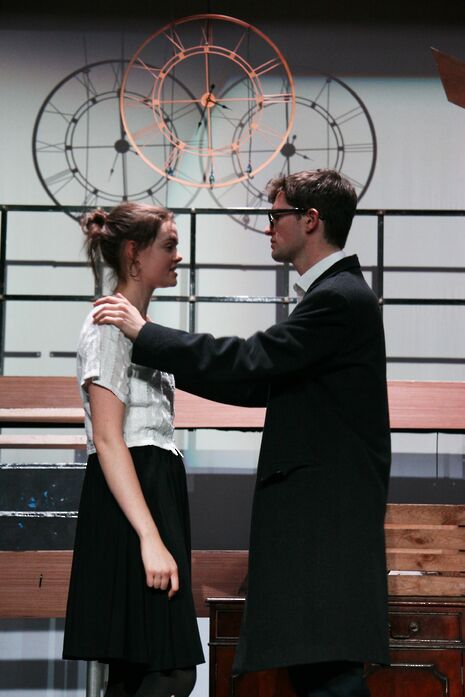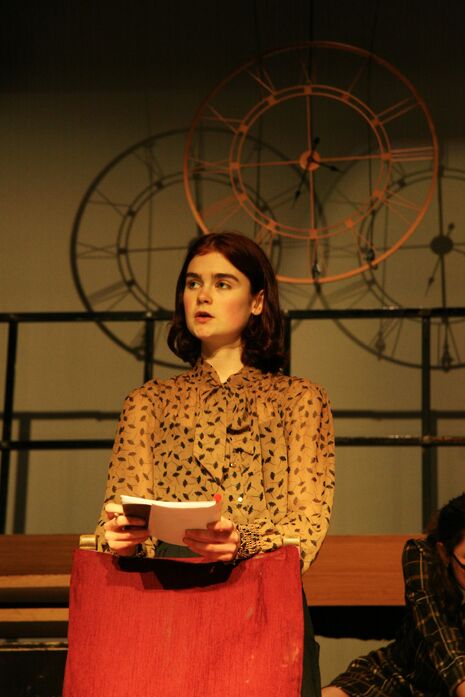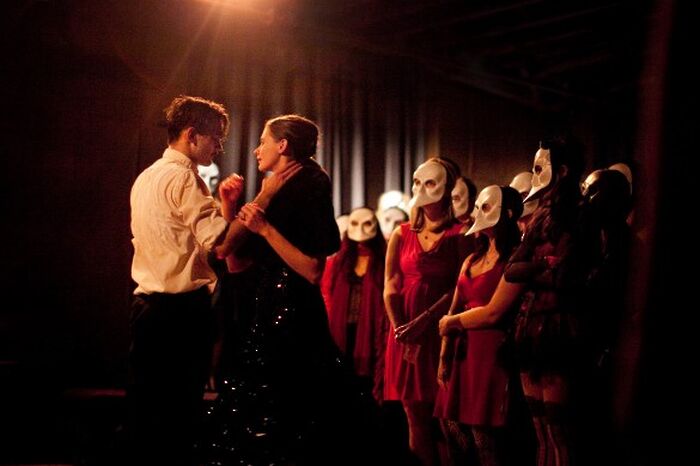The Children’s Hour review
This show has just not aged well, and its bright spots sadly fail to balance out its flaws

It’s rarely a good sign to find yourself wishing that the play you’re watching would just end already. Unfortunately, "The Children’s Hour" was plagued from start to finish not just by forgivable opening-night jitters, but also by less forgivable dramatic and conceptual flaws. Because the play failed to hang together meaningfully, it simply dragged on and on, leaving me struggling not to tune out completely.
"The Children’s Hour" centres on Karen (Saskia West) and Martha (Jessica Murdoch), lifelong friends who have toiled for years to make the girls’ school they set up together succeed. Just when things are looking up for them, it all comes crashing down when Mary, a manipulative and resentful student at the school, spreads the false but damaging rumour that Karen and Martha are actually lesbian lovers.
Although this play has an impressive pedigree, it has not aged well. First published in 1934, it is clearly a creation of its time. A New York Times review of a film adaptation described it as a ‘cultural antique’ – all the way back in 1962. For this reason, this production is at the very outset additionally burdened with the challenge of making the play accessible to a contemporary audience. Director Katie Woods is aware of this, and tries, for instance, to shift some focus away from the community’s reaction to the accusations, which she regards as rooted in the attitudes of the ‘30s, to Martha’s internal struggle to accept her lesbianism. But since the play as it is written foregrounds the community’s disapprobation and ostracization of the two women, this attempted change of subject is not really effective.

There are other mistakes with direction. Woods adds several movement sequences intended to ‘fill in the holes in the narrative’. Some are effectively presented, being well-choreographed and set to appropriate music, and add to the character of the play. But the overall effect is to make an already long play longer. Moreover, on re-reading the original script I find that the so-called “gaps” do not really need filling.
"By using up energy on stage for inconsequential movements, she achieves no dramatic effect but simply tires out the audience"
The blocking was at times overactive and distracting, especially in earlier scenes. Characters continually prance about the stage for no apparent reason. In one scene the teachers inexplicably can’t stop rearranging their books, shuffling them from one piece of furniture to another for no rhyme or reason. In this, Woods would have been best served by the adage that ‘less is more’: by using up energy on stage for inconsequential movements, she achieves no dramatic effect but simply tires out the audience.
The centrepiece of the set is a scaffold that divides the stage into three levels; unfortunately, the different levels are almost never used to any dramatic effect. The one exception is the best of the movement sequences, where Karen and Martha, trapped on the middle level, are menaced from above by the silhouette of their wealthy and influential accuser Amelia Tilford (Kim Alexander), and from below by a judgemental mob. Aside from this, however, the different levels serve little purpose. Ironically, they even set the production back at one point, when the audience is forced to watch the elderly Mrs Tilford take about fifteen seconds to hobble down the stairs, disrupting the dramatic tension of what is supposed to be a tense moment.
West and Jamie Sayers, who plays Joe, Karen’s fiancé, have evident chemistry; the scenes where they feature together are among the better ones. Sayers’ portrayal of Joe, especially in one memorable moment when he falls to his knees in anguish, is definitely one of the high points of the show. West and Murdoch also turn in fair performances, but their attempts to inject pathos into their portrayals of Karen and Martha were regrettably undercut by how draggy the show felt as a whole. Of the supporting cast, Eleanor Lind Booton puts in a fine performance as the overzealous, hammy Mrs. Mortar, and is responsible for most of the genuinely funny moments in the play.
On the whole, this production had some bright spots, but sadly not nearly enough to balance out its flaws. Where it sought to evoke pathos, it ended up verging on, if not outright veering into, melodrama. It was for the most part draggy, disjointed, and thoroughly deflated.
 Comment / Plastic pubs: the problem with Cambridge alehouses 5 January 2026
Comment / Plastic pubs: the problem with Cambridge alehouses 5 January 2026 News / Cambridge businesses concerned infrastructure delays will hurt growth5 January 2026
News / Cambridge businesses concerned infrastructure delays will hurt growth5 January 2026 News / New movement ‘Cambridge is Chopped’ launched to fight against hate crime7 January 2026
News / New movement ‘Cambridge is Chopped’ launched to fight against hate crime7 January 2026 News / Uni-linked firms rank among Cambridgeshire’s largest7 January 2026
News / Uni-linked firms rank among Cambridgeshire’s largest7 January 2026 News / AstraZeneca sues for £32 million over faulty construction at Cambridge Campus31 December 2025
News / AstraZeneca sues for £32 million over faulty construction at Cambridge Campus31 December 2025









